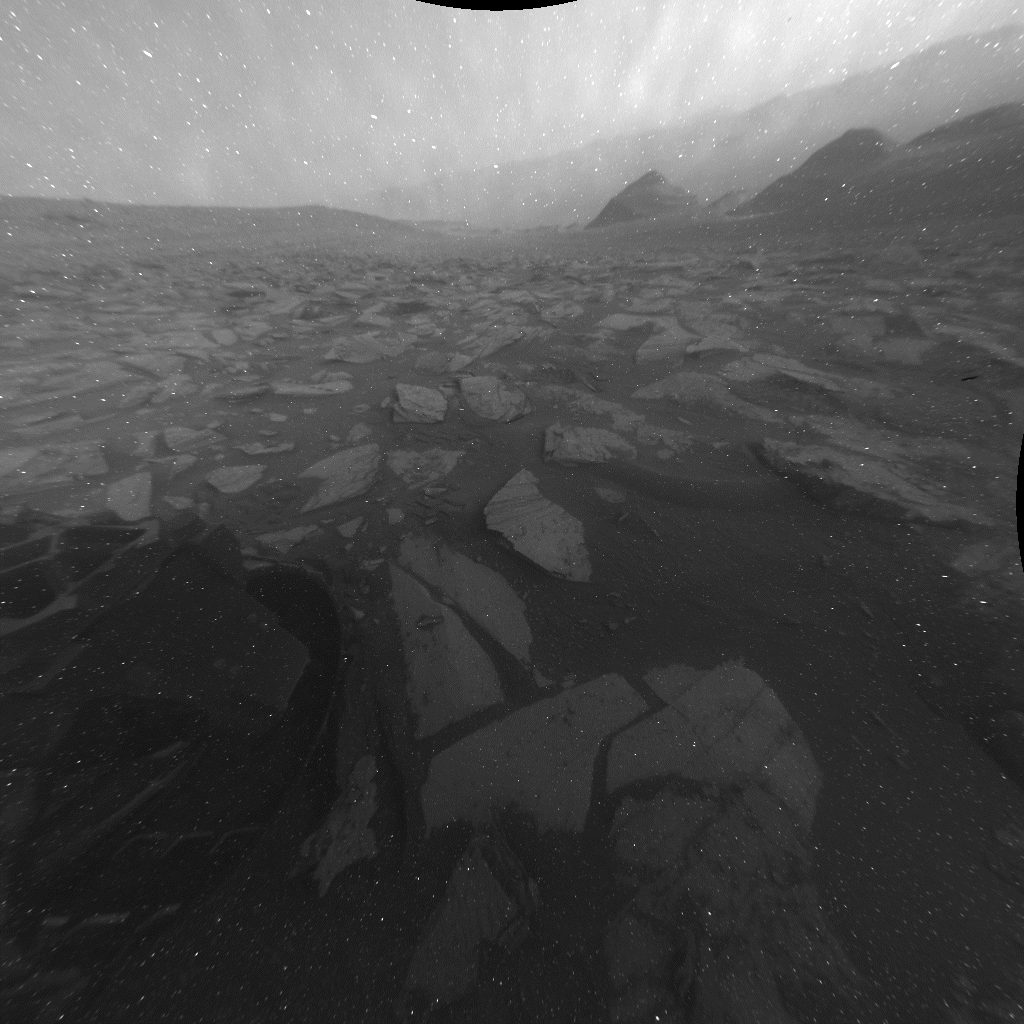On November 8th, NASA’s Curiosity Rover paused its incessant science work and just watched the day unfold on Mars. The rover used its black-and-white Hazard-Avoidance Cameras (Hazcams) to watch an entire 12-hour day on Mars as the shifting Sun cast shadows across the Martian landscape. NASA chose this day because of the Mars solar conjunction when the Sun interferes with communications with the Red Planet, meaning the rover doesn’t do any roving about. The timelapse comprises 25 frames from both the front and rear Hazcams.
When the rover stays in one place, it works pretty well as a sundial, NASA says. You can see in the video below, posted on X, how the Sun and shadows move across Curiosity and the surrounding vistas. This is the first time the Hazcams were used to record 12 hours of images from a day on Mars.
The rover team back on Earth sent the instructions to record the timelapse videos just before the start of Mars solar conjunction because during this time, the Sun’s plasma interferes with communications between Earth and Mars. While the rover isn’t completely out of contact, no complex instructions are sent during the several weeks of potential radio interference.
The Hazcams are usually used to spot rocks, slopes, and other hazards that may be risky for the rover to traverse. Because Curiosity wasn’t doing any roving or other science, the team hoped that by using the Haxcams to record a day on Mars, they might be able to capture clouds or dust devils that could reveal more about the Red Planet’s weather. However, it was a relatively mild weather day on Mars, so no unusual weather events show up in the video.
The Hazcams have an autoexposure algorithm to deal with the various amounts of daylight at different parts of the day. For example, during mid-day, the algorithm settles on exposure times of around one-third of a second. By nightfall, that exposure time grows to more than a minute. This causes a typical sensor noise known as “hot pixels” that appears as white snow across the final image.
The video posted on X shows the first part of the day, with images from the front Hazcam. The view looks southeast along Gediz Vallis, a valley found on Mount Sharp. Curiosity has been ascending the base of the 3-mile-tall (5-kilometer-tall) mountain, which sits in Gale Crater, since 2014.

At sunrise, the shadow of the rover’s 7-foot (2-meter) robotic arm moves to the left, and Curiosity’s front wheels emerge from the darkness on either side of the frame. Also visible at left is a circular calibration target mounted on the shoulder of the robotic arm. Engineers use the target to test the accuracy of the Alpha Particle X-ray Spectrometer, an instrument that detects chemical elements on the Martian surface.
The second video, which is our lead animated gif image, shows the view of the rear Hazcam as it looks northwest down the slopes of Mount Sharp to the floor of Gale Crater. The rover’s right rear wheel is visible, along with the shadow of Curiosity’s power system. NASA explained that a small black artifact that appears at the left midway through the video, during the 17th frame, resulted from a cosmic ray hitting the camera sensor. Likewise, the bright flashing and other noise at the end of the video are the result of heat from the spacecraft’s power system affecting the Hazcam’s image sensor.
How well does your own dozen-plus-year-old camera work? NASA said that speckled appearance of the images, especially prominent in the rear-camera video, is due to 11 years of Martian dust settling on the lenses. You can see in the image above how dust settles on many parts of the rover.
Curiosity launched from Earth on November 26, 2011 and landed on August 4, 2012.


“How well does your own dozen-plus-year-old camera work?” My 16-year-old camera (Panasonic Lumix LZ7) works very well – as good as when new! 🙂